Introduction
Stir-fried pea jelly, or chǎo wān dòu liáng fěn in Mandarin, is a beloved dish in Chinese cuisine that combines simplicity with explosive flavor. This humble street food staple, often found in night markets and family kitchens alike, transforms basic ingredients into a textural masterpiece. The star of the show—pea jelly—is a gelatinous block made from pea starch, which takes on a satisfyingly chewy consistency when stir-fried. Paired with a medley of aromatics, spices, and sauces, it becomes a versatile dish that can be enjoyed as a vegetarian main, a side dish, or even a snack.
This article will guide you through the process of creating stir-fried pea jelly from scratch, ensuring you achieve the perfect balance of tender-crisp edges and a flavorful glaze. We’ll explore the science behind pea jelly’s unique texture, the importance of precise cooking techniques, and creative ways to customize the dish to suit your palate. Whether you’re a novice cook or a seasoned home chef, this guide will equip you with the knowledge to master this iconic recipe.
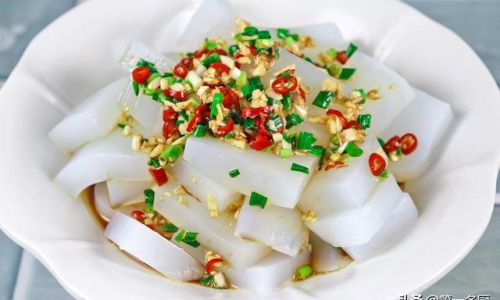
The Science Behind Pea Jelly
Pea jelly, also known as liáng fěn (凉粉), is a type of liáng cài (cold dish) that relies on the gelatinization of starch. Unlike agar-agar or gelatin, which derive their setting power from animal or seaweed-derived proteins, pea starch relies on its unique molecular structure. When heated in water, the starch granules absorb liquid and swell, creating a thick, viscous mixture. As it cools, the mixture solidifies into a wobbly, jelly-like block.
The key to perfect pea jelly lies in the ratio of starch to water. Too little starch, and the jelly will be too soft to hold its shape during stir-frying. Too much, and it will become rubbery. The ideal ratio is 1:6 (starch to water by volume), which yields a delicate yet sturdy texture. Additionally, using cold water to mix the starch before heating ensures even cooking and prevents lumps.
Ingredients You’ll Need
To make stir-fried pea jelly, you’ll need two sets of ingredients: one for the jelly itself and another for the stir-fry.
For the Pea Jelly:
- 1 cup (140g) pea starch (available at Asian grocery stores or online)
- 6 cups (1.4L) cold water, divided
- 1/2 teaspoon salt (optional, for flavor)
For the Stir-Fry:
- 2 tablespoons neutral oil (vegetable, canola, or peanut)
- 3 garlic cloves, minced
- 1-inch piece of ginger, grated
- 2-3 dried red chilies, crushed (or 1 teaspoon chili flakes)
- 1/4 cup fermented black beans (douchi), rinsed and mashed (optional but recommended)
- 1/4 cup soy sauce (use tamari for gluten-free)
- 1 tablespoon Chinese black vinegar (or substitute with rice vinegar)
- 1 teaspoon sugar
- 1/4 cup water or stock
- 2 green onions, thinly sliced (for garnish)
- 1 tablespoon sesame seeds (optional)
- Fresh cilantro leaves (optional, for garnish)
Equipment Checklist:
- Large mixing bowl
- Whisk
- Heavy-bottomed saucepan
- Silicone spatula or wooden spoon
- 8×8-inch baking dish (or similar container)
- Sharp knife
- Wok or large skillet
Step 1: Making the Pea Jelly

1. Prepare the Starch Mixture
In a large mixing bowl, combine the pea starch with 1 cup of cold water. Whisk vigorously until the starch is fully dissolved and no lumps remain. This step is crucial—lumps will result in an uneven texture.
2. Cook the Jelly
In a heavy-bottomed saucepan, bring the remaining 5 cups of water to a gentle simmer over medium heat. Add the salt (if using) and stir to dissolve. Slowly pour the starch mixture into the simmering water, whisking constantly. The mixture will begin to thicken almost immediately.
3. Achieve the Right Consistency
Reduce the heat to low and continue whisking for 8–10 minutes. The jelly is ready when it turns translucent and pulls away from the sides of the pan. To test, dip a spoon into the mixture—it should coat the spoon thickly and fall off in a slow, gloppy ribbon.
4. Set the Jelly
Pour the hot jelly into a lightly oiled baking dish. Smooth the surface with a spatula and let it cool at room temperature for 1 hour. Transfer to the refrigerator and chill for at least 3 hours, or until fully set. The jelly will firm up as it cools.
Pro Tip: For faster setting, place the dish in the freezer for 30 minutes, then transfer to the fridge. Avoid overchilling, as this can make the jelly too stiff.
Step 2: Preparing the Pea Jelly for Stir-Frying
1. Unmolding and Cutting
Once chilled, run a knife around the edges of the baking dish to loosen the jelly. Invert the dish onto a cutting board and tap gently to release the block. The jelly should slide out easily.
2. Cutting Technique
Using a sharp knife dipped in cold water (to prevent sticking), cut the jelly into 1-inch cubes or 1/4-inch-thick strips. The shape you choose will affect the cooking time and texture—cubes are heartier, while strips cook faster and develop crispier edges.
Pro Tip: If the jelly feels too soft, return it to the fridge for another 30 minutes. For a rustic look, tear the jelly into irregular pieces with your hands.
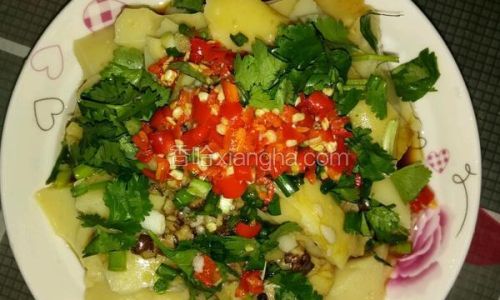
Step 3: Stir-Frying the Pea Jelly
1. Preheat the Wok
Heat a wok or large skillet over high heat until a drop of water sizzles and evaporates on contact. Add the oil and swirl to coat the pan.
2. Aromatics Base
Add the minced garlic, ginger, and dried chilies to the hot oil. Stir-fry for 30 seconds until fragrant but not browned. Overcooking the aromatics will impart bitterness.
3. Introduce the Jelly
Add the pea jelly pieces to the wok in a single layer (if possible). Let them cook undisturbed for 2–3 minutes to develop a golden-brown crust. Gently toss the pan or stir with a spatula to flip the pieces. Repeat until all sides are lightly caramelized.
4. Flavor Infusion
Push the jelly to one side of the wok and add the fermented black beans (if using) to the empty space. Stir-fry for 1 minute to release their umami-rich flavor, then mix everything together.
5. Sauce Magic
In a small bowl, whisk together the soy sauce, black vinegar, sugar, and water. Pour this mixture over the jelly and toss gently to coat. The sauce will thicken slightly as it reduces, clinging to the jelly pieces.
6. Final Touches
Cook for an additional 2–3 minutes until the sauce is mostly absorbed and the jelly is glazed. Remove from heat and stir in half of the green onions.
Step 4: Serving and Garnishing
Transfer the stir-fried pea jelly to a serving platter. Garnish with the remaining green onions, sesame seeds, and cilantro leaves. Serve immediately while hot, as the jelly will soften as it cools.
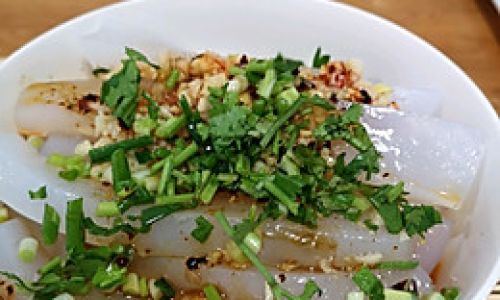
Serving Suggestions:
- Pair with steamed jasmine rice or noodles.
- Wrap in a thin pancake (like jianbing) with hoisin sauce.
- Serve as part of a banquet-style meal alongside other stir-fries and braised dishes.
Customization and Variations
Spice Level: Adjust the heat by varying the amount of chili or using fresh bird’s-eye chilies for a brighter kick.
Vegetarian/Vegan: Ensure your soy sauce is gluten-free and omit fermented black beans if preferred. Add sliced mushrooms or diced tofu for extra protein.
Protein Boost: Toss in cooked shrimp, ground pork, or shredded chicken during the final minutes of cooking.
Herbaceous Twist: Swap cilantro for Thai basil or mint for a different aromatic profile.
Troubleshooting Common Issues
My jelly is too soft/falls apart during stir-frying:
- Increase the starch-to-water ratio slightly next time (e.g., 1.5 cups starch to 6 cups water).
- Ensure the jelly is fully chilled before cutting.
- Use a nonstick pan to minimize sticking.
The jelly is rubbery:
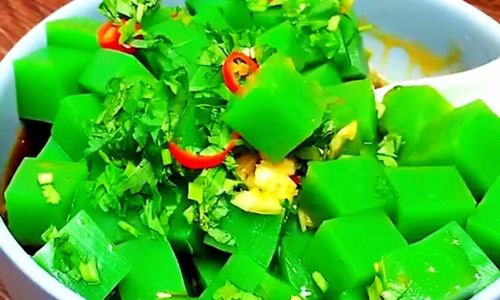
- Reduce the cooking time when making the jelly—overcooking breaks down the starch molecules.
The sauce is too thin:
- Mix 1 teaspoon of cornstarch with 1 tablespoon water and stir into the sauce during the final minute of cooking.
Health Benefits of Pea Jelly
Pea jelly is a low-calorie, nutrient-dense dish that offers several health perks:
- High in Fiber: Pea starch is rich in resistant starch, which promotes gut health by feeding beneficial bacteria.
- Low Glycemic Index: The starch is digested slowly, preventing blood sugar spikes.
- Gluten-Free: A safe option for those with celiac disease or gluten sensitivities.
- Rich in Plant Protein: Peas are a good source of amino acids, making this dish more satiating than traditional starch-based sides.
Cultural Significance
Stir-fried pea jelly has deep roots in Chinese culinary traditions, particularly in regions like Sichuan and Yunnan. Historically, it was a peasant dish made from readily available ingredients. Today, it’s celebrated as a street food icon, with vendors often adding regional twists like Sichuan peppercorns or pickled vegetables.
Conclusion
Mastering stir-fried pea jelly is a rewarding culinary endeavor that bridges tradition and innovation. By understanding the science behind starch gelatinization and honing your stir-frying technique, you can elevate this simple dish into a restaurant-worthy creation. Whether you prefer it fiery hot or subtly savory, this recipe invites experimentation. So grab your wok, embrace the sizzle, and savor the joy of creating a dish that’s as culturally rich as it is delicious.
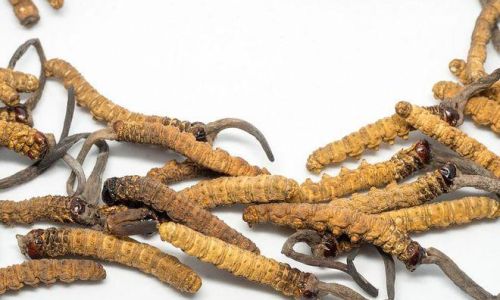
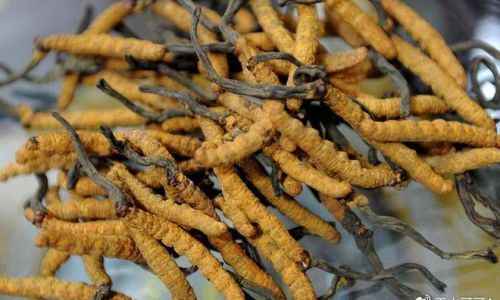
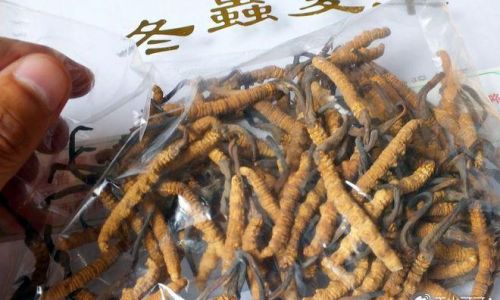
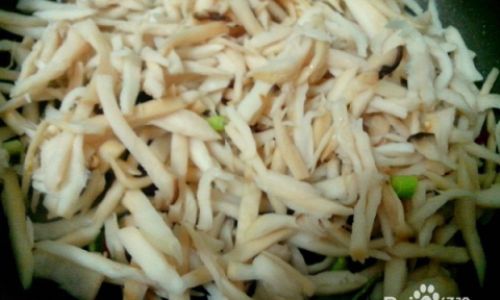
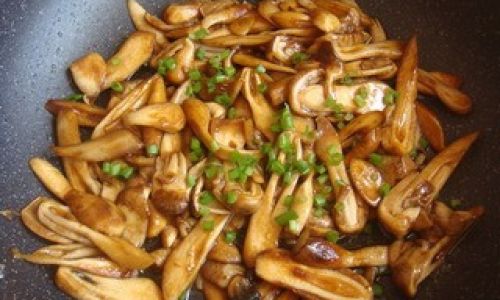
0 comments